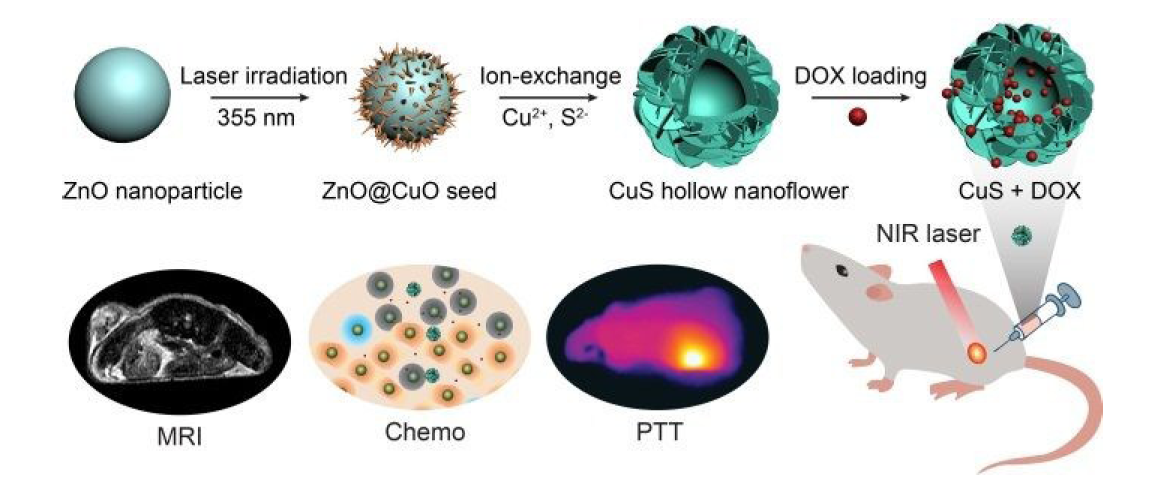
A joint team of researchers explored a new way to develop a single-component nanoagent with multiple functions for efficient cancer therapy.
The team made a new attempt by taking 3D CuS hollow nanoflowers (HNs) with 2D nanoplates as a theranostic nanoagent for both magnetic resonance imaging (MRI) and photothermal therapy (PTT) as well as chemotherapy simultaneously.
Photothermal therapy is a treatment method to kill cancer cells. Generally, materials with high photothermal conversion efficiency were injected into the human body and gather near tumor tissues, with the subsequent irradiation of external light source (usually near-infrared light), the material converts light energy into heat energy to kill cancer cells, which is more sensitive than normal human cell toward heat energy.
Developing imaging–guided therapy of cancer has attracted increasing attention in the field of the visualization therapy due to the huge significance in clinical.
Traditionally, two or three kinds of materials with different properties were combined together to realize multiple functions at the same time.
But the process is not an easy job. So, it is expect to develop a single-component nanoagent with multiple functions (including magnetic resonance imaging) to promote the development of visualization therapy.
In fact, CuS nanoparticle is generally known as a traditional nanomaterial for photothermal therapy. And some Cu(II)–based compounds have also been proved to be potential for magnetic resonance imaging (MRI).
Therefore, the team took 3D CuS hollow nanoflowers (HNs) consisting of 2D nanoplates as a theranostic nanoagent for magnetic resonance imaging (MRI), photothermal therapy (PTT), and chemotherapy simultaneously at the first time.
In addition to the new attempt, the lab experiments also demonstrated the obvious synergistic therapeutic efficiency of PTT and chemotherapy of such a single–component theranostic nanoagent.
The team thought they could demonstrate a single–component multifunctional theranostic nanoagent for T2–FLAIR MRI guided thermochemotherapy, which may have great potential application in theranostics of cancer.
The joint work was conducted by Prof. LIANG Changhao in Institute of Solid State Physics, Hefei Institutes of Physical Science and Prof. YANG Xiuhua in The First Affiliated Hospital of Harbin Medical University.
These findings were published online in Biomaterials Science.
This research was supported by National Basic Research Program of China, Instrument Developing Project of the Chinese Academy of Sciences, National Natural Science Foundation of China.

Schematic illustration of the synthetic processes of CuS HNs and MRI-guided synergistic therapy by combining PTT and chemotherapy (Image by ZHANG Hao)

86-10-68597521 (day)
86-10-68597289 (night)

52 Sanlihe Rd., Xicheng District,
Beijing, China (100864)

